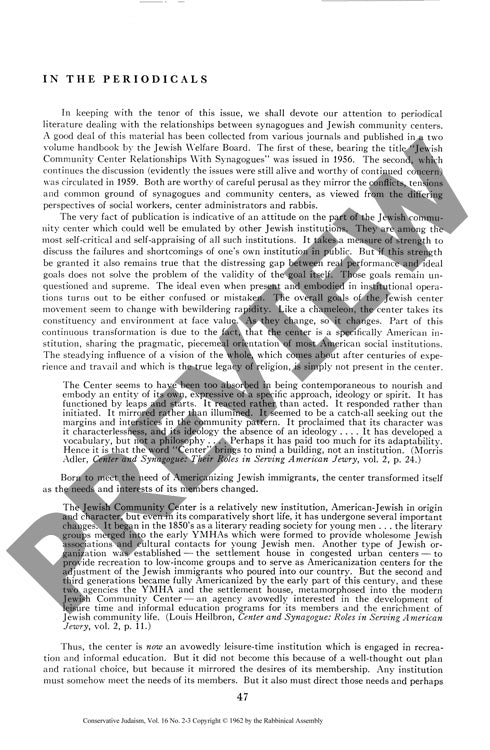In the Periodicals
Couldn't load pickup availability
Fundamental tensions between synagogues and Jewish community centers emerged in mid-20th century America as centers increasingly prioritized secular recreation over religious education. Through analysis of Jewish Welfare Board handbooks from 1956 and 1959, contrasting perspectives from social workers, center administrators, and rabbis reveal a deepening ideological divide over the centers' evolving mission. Originally established in the 1850s as literary societies and settlement houses serving immigrant populations, Jewish community centers transformed into modern leisure-time institutions that adapted their programming to member preferences rather than promoting distinctively Jewish values. Critical examination of period literature demonstrates that centers' emphasis on group work techniques and secular activities like athletics and crafts created what many viewed as institutional "usurpation" rather than legitimate competition with synagogues. The centers' pragmatic approach to programming and limited commitment to Torah study ultimately raised questions about their claims to Jewish communal funding priority when compared to synagogues' religious mission. The analysis, drawing on extensive periodical documentation, illuminates how this institutional evolution challenged traditional understanding of authentic Jewish content and community priorities in postwar American Jewish life.

More Information
-
Physical Description
-
Publication Information
Published 1962
ISBN
-
Publication Credits
David Silverman

